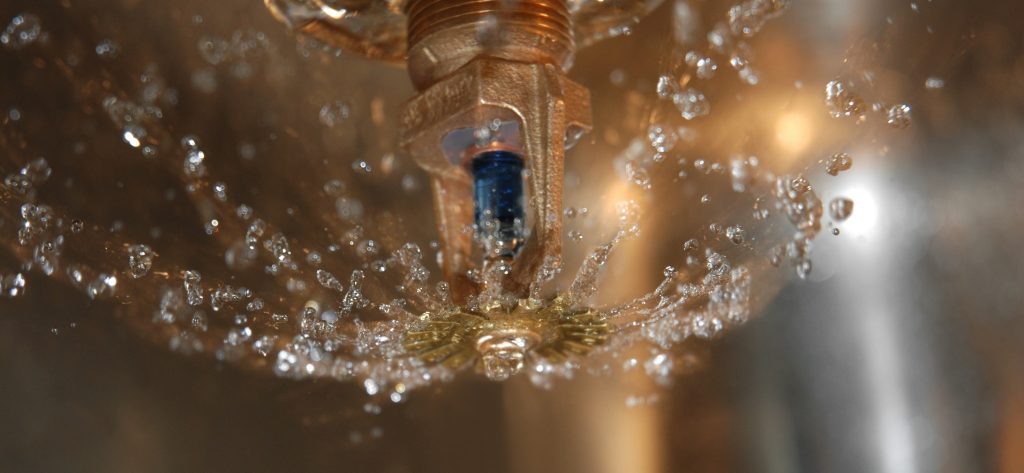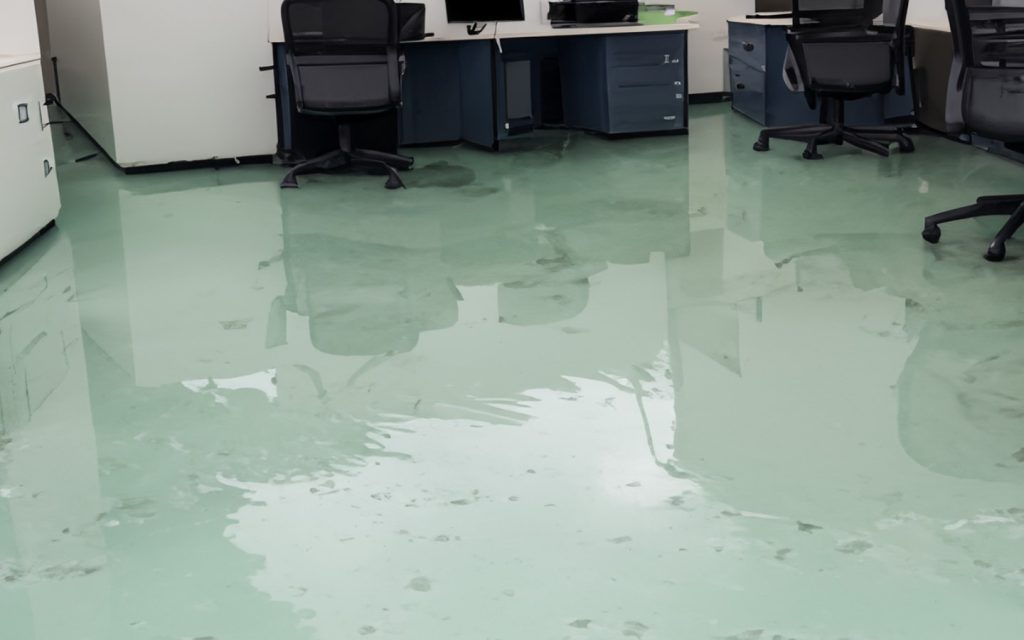
Water Damage Cleanup After Fire Suppression System Discharge
When a fire suppression system goes off, it can be a lifesaver, mitigating fire damage and potentially saving lives. Sprinkler systems, fire extinguishers, and all other fire safety systems are important and often legal measures within commercial facilities that protect those who use them, but what happens after they are activated? Whether putting out a fire, or simply due to human error, once the system discharges, you’re often left with a new challenge: water damage.
At Dryco, we understand the urgency and complexity of water damage cleanup, especially after a fire suppression system discharge. Here’s how to tackle the situation effectively and restore your property to its pre-loss condition.
Immediate Steps to Take After a Fire Suppression System Discharges
- Ensure Safety
- Evacuate all occupants to avoid slip-and-fall accidents.
- Shut off the electrical power to the affected area to prevent electrical shocks.
- Stop the Water Flow
- Locate and shut off the main water supply to prevent further water damage.
- Contact a Professional Restoration Service
- A restoration contractor will mitigate damage, manipulate contents, and coordinate with your insurance company to expedite your recovery time.
- At Dryco, our team of mitigation and restoration experts is available 24/7 to start the water extraction and drying process to prevent mold growth and minimize the loss to your property.
- Contact a Fire System Professional
- Reach out to a fire suppression company to evaluate the condition of the system and work to get it back up and running properly.
- Document the Damage
- Take photos and videos of the scene, including damaged sprinkler heads and affected areas. This documentation is crucial for insurance claims and restoration planning.
Our Cleanup and Restoration Process
Once the area is secure and the water supply is shut off, our team will:
- Inspect and Assess the Damage
- A thorough inspection allows us to determine the extent of water damage and develop a tailored restoration plan.
- Remove Water
- We remove standing water from the premises using advanced pumps and vacuums to mitigate further damage.
- Dry and Dehumidify
- Industrial-grade dehumidifiers and air movers are utilized to dry out the structure and contents, preventing mold and mildew growth.
- Clean and Sanitize
- All affected areas are cleaned and sanitized to ensure a safe and healthy environment.
- Sanitation is especially important when the water within the system has been resting in the pipes for an extended period of time, as it can be contaminated with bacteria.
- Reconstruct
- We handle the repairs and reconstruction to return your property to its pre-loss condition.
Why Water Damage from Fire Suppression Systems is Different from Other Forms of Water Damage
- Condition of Water
- While the discharged water is often clean, stagnant water that has sat for decades can be highly contaminated. Sometimes severely enough to be classified as black water.
- Impact of Black Water: Black water exposure to porous surfaces necessitates the removal of those materials. Non-porous surfaces will require extensive decontamination to ensure the safety of occupants and the longevity of structural components.
- Contaminants: These may include sediment, chemicals, and pollutants that complicate the cleanup process.
- Scale
- Commercial and Industrial Locations: Fire suppression systems are typically found in large-scale commercial or industrial settings, leading to significant water volumes during a discharge.
- Extensive Spread: The water can contaminate large areas quickly, affecting multiple rooms, floors, or even entire buildings.
- Infrastructure and Operations Impact: The large scale of these losses means that critical infrastructure and business operations can be heavily impacted.
- Safety and Potential Impact on Number of People Affected
- Because fire suppression systems are present within highly-trafficked facilities, the potential for safety concerns is greatly elevated.
- Evacuating a group of people, be it customers, employees, or tenants, creates additional opportunities for accidents and injuries.
- Combination of Damage Types
- Water and Fire Damage: The combination of water damage from the suppression system and potential fire damage can create complex restoration challenges.
- Structural and Material Damage: Water can seep into structural elements, drywall, and insulation, while also damaging electronics, furniture, and other contents. This means that the removal of some materials subsequently requires reconstruction after-the-fact.
- Mold and Mildew: The presence of water combined with organic materials can lead to rapid mold and mildew growth, requiring remediation.
- Timeline for Recovery
- Urgency for businesses: Commercial entities need to recover quickly to minimize operational downtime and financial losses.
- Rapid Response: Immediate professional intervention is crucial to mitigate damage and start the drying and decontamination process.
- Efficient Restoration: Using advanced equipment and techniques to expedite the recovery process and ensure business continuity as swiftly as possible.

Why Choose Dryco?
Dryco is a trusted and experienced restoration company that specializes in water damage restoration, including commercial and large-loss water damage services. Our team of professionals is highly trained and equipped with the latest technology to efficiently and effectively restore your business. We understand the importance of quick response when it comes to water damage, which is why we offer 24/7 emergency services. With Dryco, you can trust that your property will be restored to its pre-loss condition in a timely manner.